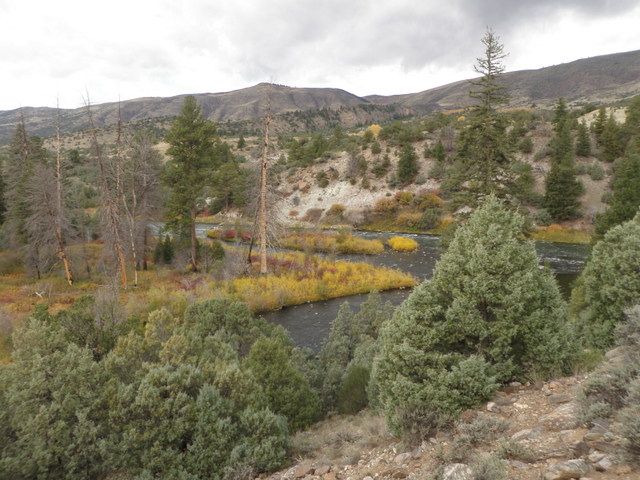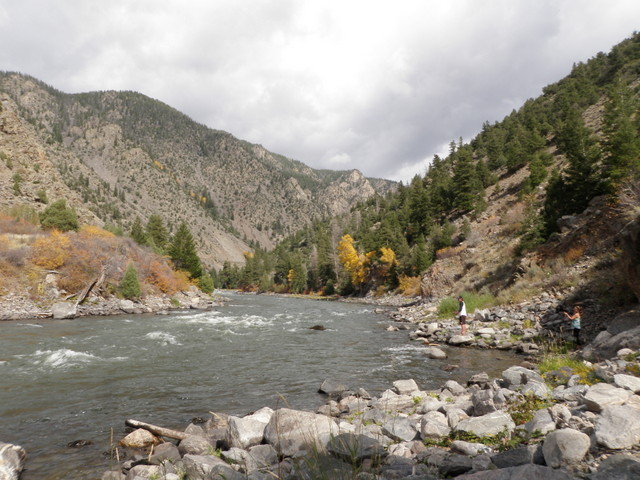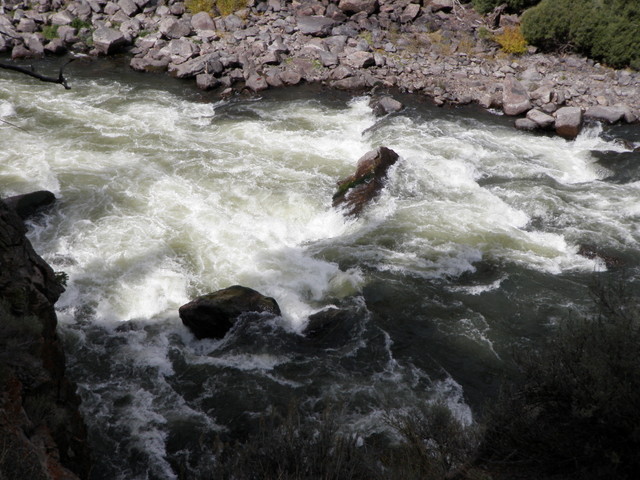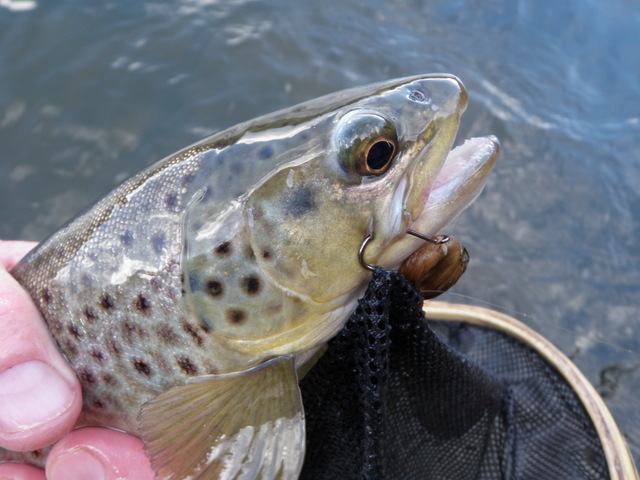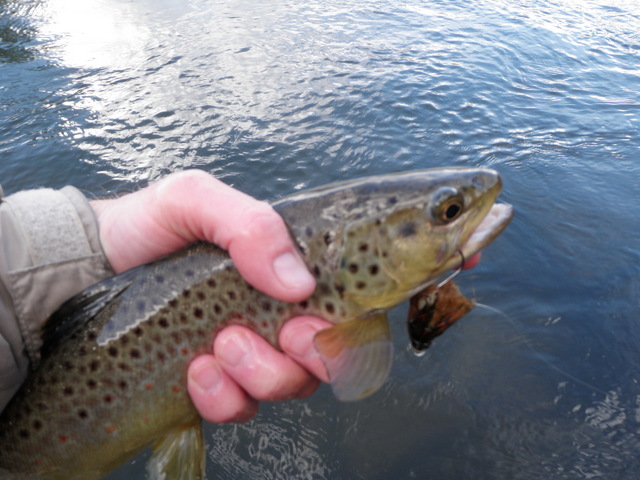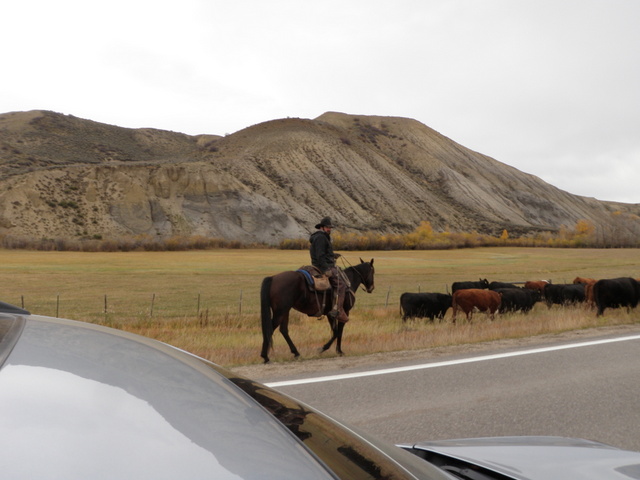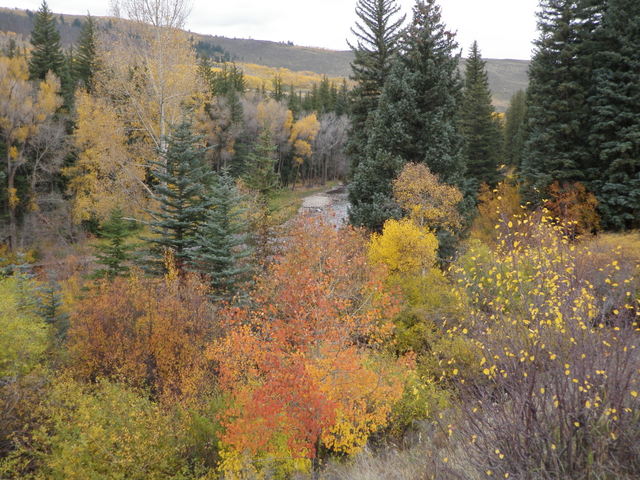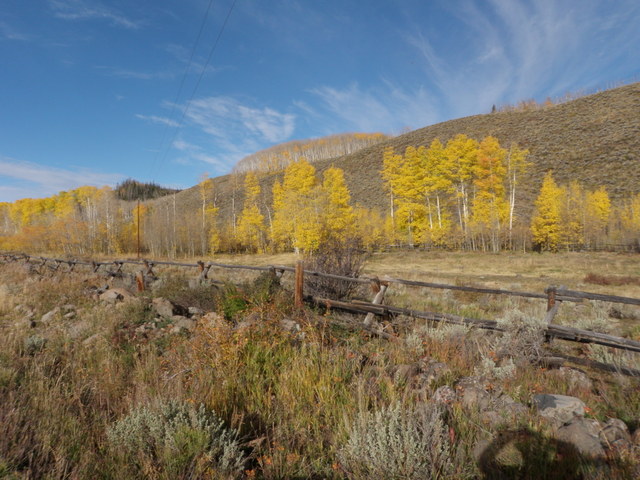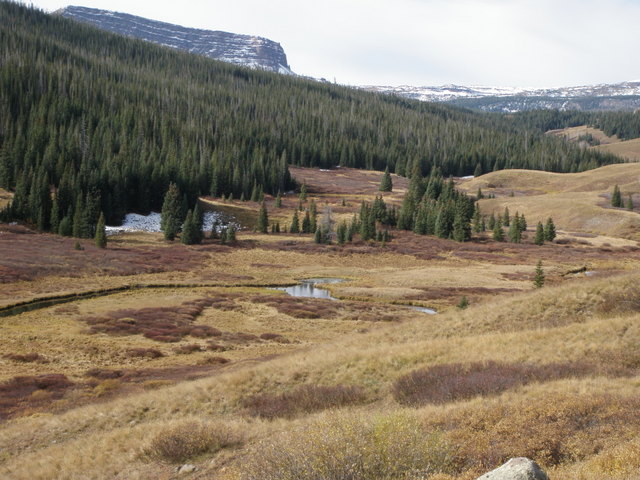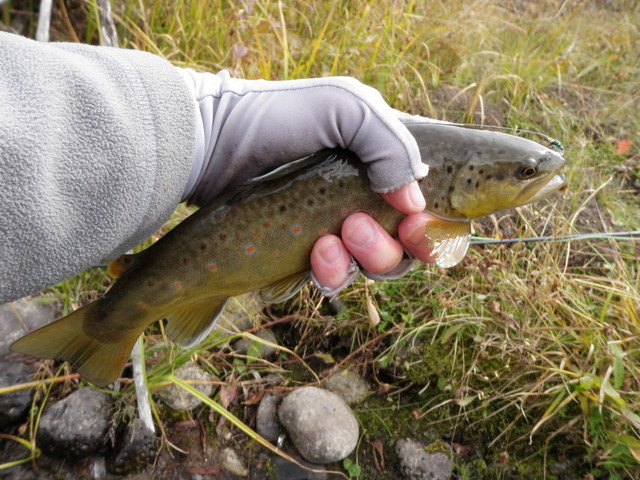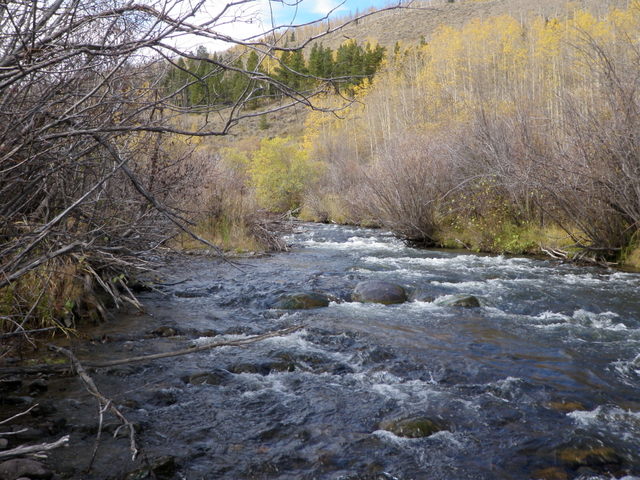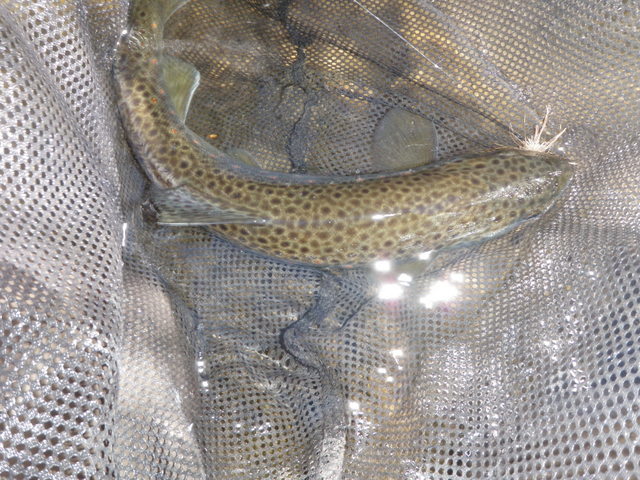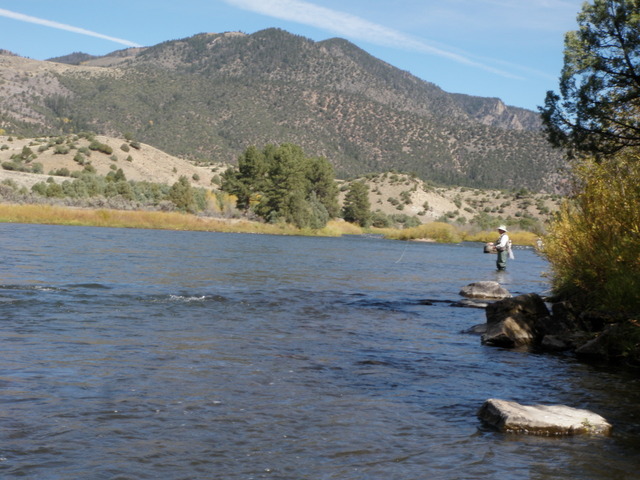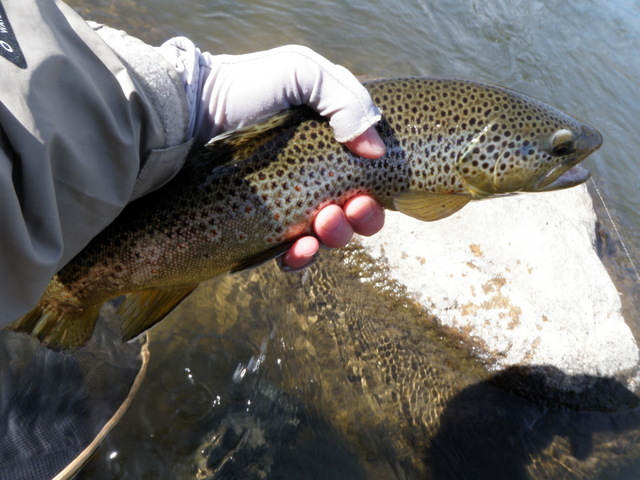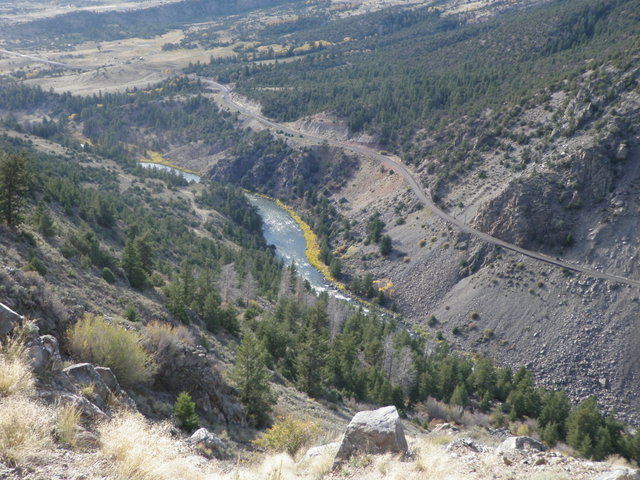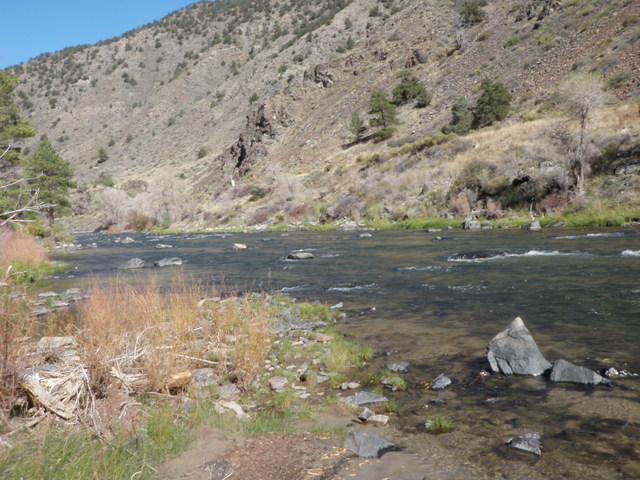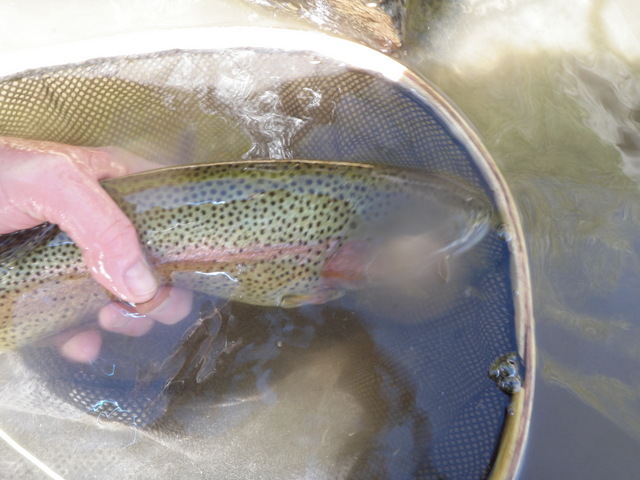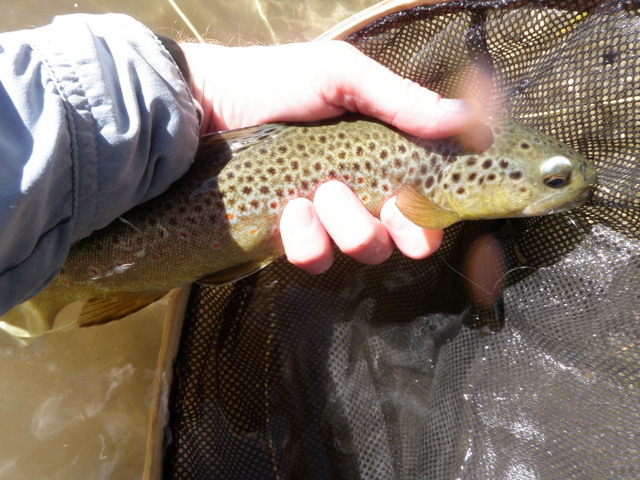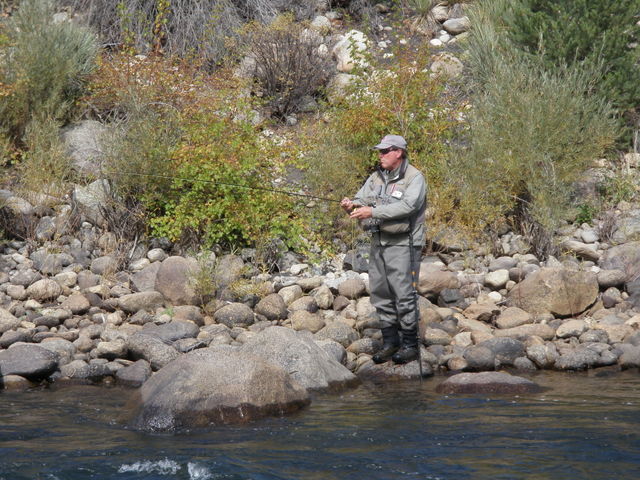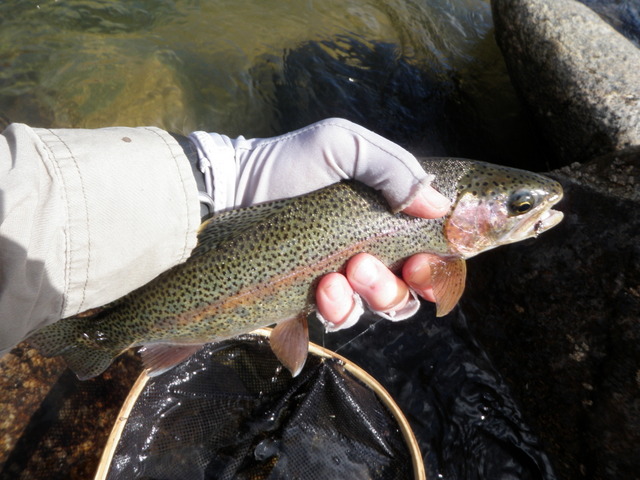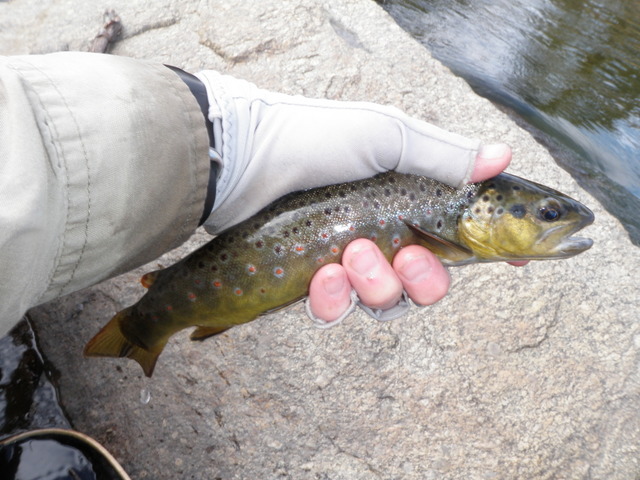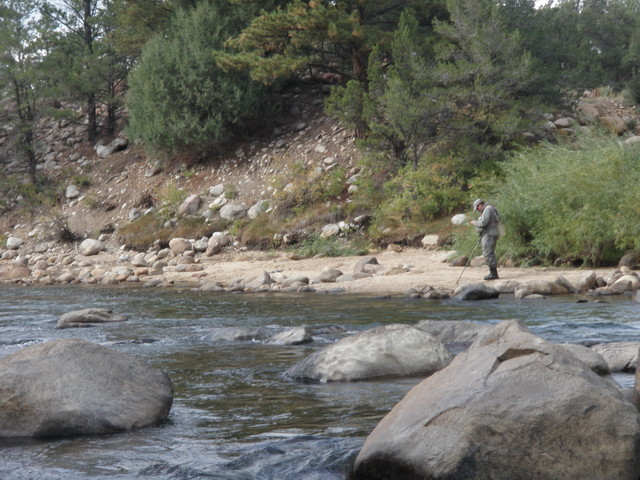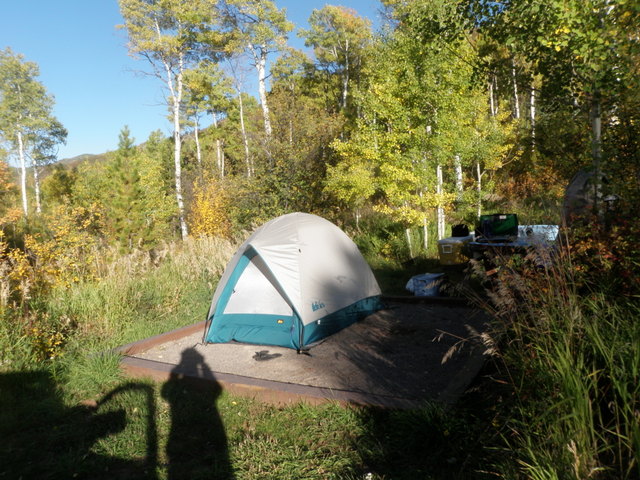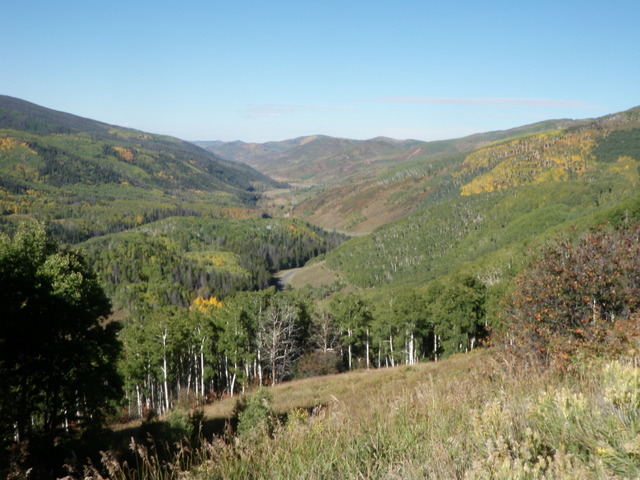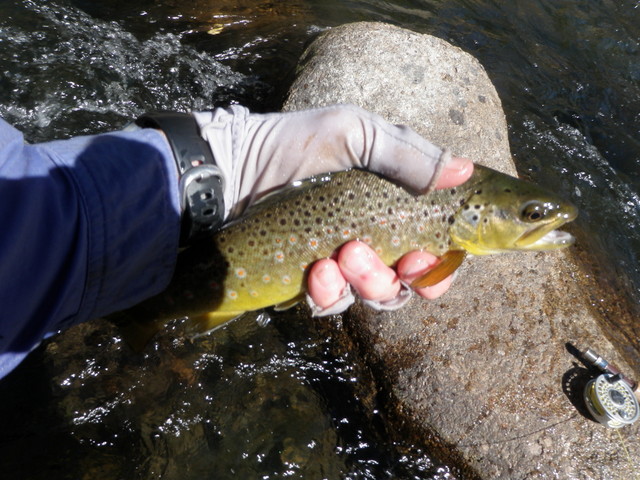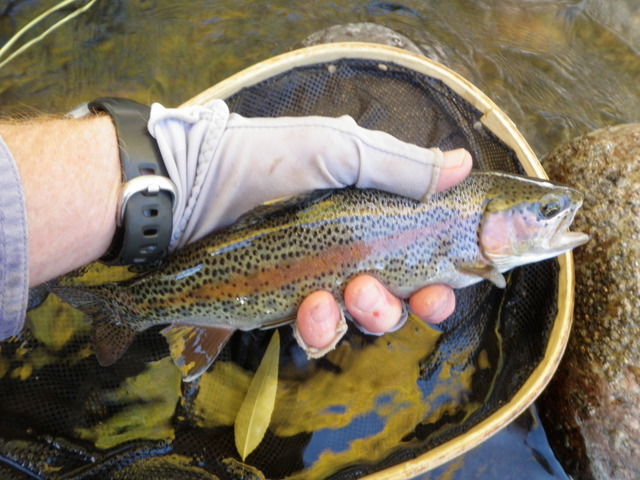Time: 10:30AM – 4:00PM
Location: Chafee – Fremont County line and upstream
Fish Landed: 13
Arkansas River 10/26/2014 Photo Album
Catching one trout on a streamer on the Colorado River and then quitting left me questioning whether I could repeat this success. I constantly see photos on Instagram of large fish with ugly streamers suspended from their jaws. Did I simply need to commit more stream hours to this method of fishing to enjoy more success catching bigger fish?
Jane and I hoped to take advantage of another unseasonably warm fall day on Sunday October 26, but when I began checking stream flows and fishing reports, I discovered that the local options were limited. I was hoping to visit a larger river that offered good conditions for streamer fishing, but the South Platte drainage was running low, and the stream reports indicated that the fishing was fairly technical. I fished South Boulder Creek on Friday, and I hoped for a different location on Sunday. Reports on the Williams Fork and Big Thompson were fair, but both indicated that crowded conditions were the rule particularly on the weekend.
The most attractive option was the Arkansas River as it represented a larger river, and that meant streamer fishing was a viable option. In fact the reports from the fly shops in the area suggested that streamers should be in a fly fisherman’s arsenal as the brown trout were becoming territorial. Unfortunately Jane is not a big fan of accompanying me to the Arkansas River as most of the best fishing locations are right next to a busy highway. For this reason I decided to make a solo trip, and Jane stayed at home to enjoy the weather doing local activities. I did not want to pass up a day of mild temperatures particularly since I was scheduled for skin surgery on my back on Thursday October 30.
[pe2-image src=”http://lh5.ggpht.com/-vA6fByH74yk/VE3CiG9jH4I/AAAAAAAAoJM/yp1eHYWyJ80/s144-c-o/PA260058.JPG” href=”https://picasaweb.google.com/108128655430094950653/10262014ArkansasRiver#6074725363632775042″ caption=”Mt. Princeton” type=”image” alt=”PA260058.JPG” ]
I jumped off to a nice early start and arrived at the Fremont – Chafee county line by 10AM. The temperature was in the low 60’s as I prepared to fish, so I pulled on my raincoat for warmth. The sky was pure blue with no visible clouds, and this condition would remain for the entire day. Because of the larger river and my desire to keep streamer fishing as an option, I elected to use my Scott six weight rod. I dropped my extra spool of sinking line in my backpack so I could make a switch in support of streamer fishing at some point during the day. I did not anticipate surface fishing, so I decided to rig my line with the thingamabobber and level line technique that Taylor Edrington of Royal Gorge Anglers taught me. It is easier to set up this system while at the car, so this delayed the start of my fishing a bit.
Finally I was ready, so I crossed the wide river at the tail of the long pool below the county line and then began walking upstream on the north bank. I normally head downstream, but for variety I decided to explore the water upstream from the parking spot. After skipping the bottom third of the pool which consisted of slow moving deep water, I stopped and entered the edge of the river. As my initial offerings I tied on a weighted 20 incher and then below that I knotted on an ultra zug bug. The area where I entered was characterized by a long slow moving slough off to the side of the main current. The side pool was twenty yards long and averaged twenty feet wide, and I began lofting casts directly upstream to cover the entire width from the bank to the current seam.
I failed to interest any fish in the first couple series of casts, but then as I dangled my flies behind me while wading upstream three or four steps, I felt a tug. I reacted with a soft hook set and felt the weight of a fish. The twelve inch brown put up a spirited battle before I netted it with my new Hobbs Creek net with a rubber bag. I decided to photograph the fish that christened my new net and discovered that the rubber bag material provides a nice contrast for photos.
[pe2-image src=”http://lh6.ggpht.com/-ivUj1u1CR1c/VE3CjqYeSKI/AAAAAAAAoJg/xGfL3pbgTVU/s144-c-o/PA260060.JPG” href=”https://picasaweb.google.com/108128655430094950653/10262014ArkansasRiver#6074725390320814242″ caption=”The New Net Is Christened” type=”image” alt=”PA260060.JPG” ]
Next I moved halfway up the long side pool and lobbed a cast toward the top and, wham, the indicator dove. Again I reacted with a swift hook set, and a hot fish streaked down the river, but I soon discovered that it was foul hooked by the 20 incher. I release the chunky thirteen inch brown and tossed another cast to the top of the pool and once again the indicator dove. This time a smaller brown leaped above the water, but it became free in an instant after the launch. When I reeled up my line I discovered that the entire five foot section of level monofilament broke away from the thingamabobber. Apparently I tied a bad knot, but I was puzzled by how I was able to land the previous fish, particularly the foul hooked brown that generated quite a bit of tension on my line. Perhaps the foul hooked fish somehow nicked the leader near the knot during the fight to escape.
[pe2-image src=”http://lh3.ggpht.com/-UAovLfTneus/VE3C5dkIsVI/AAAAAAAAoKI/eAt2KaLtmYg/s144-c-o/PA260067.JPG” href=”https://picasaweb.google.com/108128655430094950653/10262014ArkansasRiver#6074725764837192018″ caption=”Nice Water Ahead” type=”image” alt=”PA260067.JPG” ]
The early fishing was amazingly hot so I quickly moved on and fished the tandem of nymphs in all the likely runs and pockets along the north bank of the river. In total I landed five fish before breaking for lunch at 12:30, and in addition I experienced several long distance releases and the foul hooked fish mentioned earlier. It was a strong two hours of action. Shortly after moving above the long slow moving stretch, I reached another juicy spot. As I lifted my flies to recast at the tail of the riffle of moderate depth, I felt weight and accelerated my lift into a hook set. This action caused the weight to charge upstream for safety and a solid battle ensued. Eventually I slid my new net beneath a hefty fifteen inch brown trout, and this proved to be my best fish of the day.
[pe2-image src=”http://lh6.ggpht.com/-MsFfnHngsKg/VE3C3q9mHZI/AAAAAAAAoJw/Ne-QZDkP1jw/s144-c-o/PA260064.JPG” href=”https://picasaweb.google.com/108128655430094950653/10262014ArkansasRiver#6074725734073900434″ caption=”Best Fish of the Day” type=”image” alt=”PA260064.JPG” ]
The afternoon pretty much followed the morning in terms of fishing method, but the pace of fish catching slowed quite a bit. The fish averaged twelve inches in length, and all were brown trout. The negative factor that affected the afternoon fishing was the strong wind that gusted down the canyon. If I ever had thoughts of fishing with a dry/dropper, the wind reminded me that it was a bad idea. Even with my stiff six weight I had great difficulty punching casts upstream despite the benefit of the extra weight provided by the strike indicator and split shot. In many cases the wind still managed to push the flies back toward me, and this probably affected my catch rate more than I realized particularly in places that lacked depth. In order to generate the line speed necessary to penetrate the wind I overpowered the forward stroke and accelerated my rod tip down toward the water. This worked to some degree, but it created quite a disturbance where the flies splashed through the surface of the river.
[pe2-image src=”http://lh5.ggpht.com/-hrbE_TXE3T8/VE3C4dICheI/AAAAAAAAoJ4/N-VhyhDZGQM/s144-c-o/PA260065.JPG” href=”https://picasaweb.google.com/108128655430094950653/10262014ArkansasRiver#6074725747539477986″ caption=”Another Fine Catch” type=”image” alt=”PA260065.JPG” ]
As I was wading upstream, I noticed three or four fish that bolted from the bank cover, so I tried to make casts very close the stream side rocks and vegetation particularly where the river offered depth next to cover, and this strategy paid off with several nice fish. By 2:15 I was not catching fish on the 20 incher, so I swapped it for a beadhead hares ear. I remembered the hares ear generating quite a bit of success on previous late October trips to the Arkansas River, but it was not the right fly for 2014 and yielded no fish.
[pe2-image src=”http://lh6.ggpht.com/-oQfOErWgysk/VE3C5_zNIrI/AAAAAAAAoKQ/fnnBLiJkmIw/s144-c-o/PA260068.JPG” href=”https://picasaweb.google.com/108128655430094950653/10262014ArkansasRiver#6074725774027203250″ caption=”Ultra Zug Bug Was Top Producer” type=”image” alt=”PA260068.JPG” ]
As 2:45 arrived my fish count stood at twelve, and all the brown trout fell for the ultra zug bug except for two that favored the 20 incher in the early phase of my outing. The ultra zug bug continues to amaze me with its effectiveness and has become a major weapon in my arsenal. And best of all it is easy to tie!
During the mid-afternoon time period I approached the water across from the next wide pullout as one drives west toward Salida. This fifty yard stretch of river appeared to be absolutely delicious with a series of wide riffles and deep runs behind large protruding boulders and flowing over rocky bottoms of moderate depth. Much to my surprise however it did not produce as I anticipated, and I landed two of the twelve in this area. During previous visits to this area it produced fish after fish, and despite low productivity on Sunday, I pledged to revisit it when I return in the spring if the flows allow me to cross.
[pe2-image src=”http://lh5.ggpht.com/-RHWkV_WgT7I/VE3C61V4zPI/AAAAAAAAoKg/1LcCeHqeq2M/s144-c-o/PA260070.JPG” href=”https://picasaweb.google.com/108128655430094950653/10262014ArkansasRiver#6074725788399750386″ caption=”Another Stretch of Attractive Water” type=”image” alt=”PA260070.JPG” ]
At 3PM I sat down on a rock and removed my spool of floating line and replaced it with a sinking tip. I added a couple of sculpzillas to my fleece pouch at the outset of the day, so I removed an olive one and tied it to my line. I began working upstream making mostly short casts across to the current seam and then allowing the undulating olive marabou glob to swing back across toward my position. I twitched and stripped the line constantly as I worked the fly across and below me. I also experimented with upstream casts to deep pools, and during these drifts I jigged the streamer up and down as it tumbled back toward me.
Despite my creative movements, the fish were having none of it until I reached a fairly shallow nondescript stretch of water. I’m not even sure why I did it, but I flicked a backhand cast fifteen feet above where I was standing so that the ugly sculpin landed six inches out from the bank.I was shocked to see a twelve inch brown trout materialize from two feet of water, and it instantly chowed down on the olive marabou mass. I could not believe my eyes, but I set the hook and played the feisty fish to my new net. I snapped a head shot as proof that I caught another fish on a streamer and then released it to the cold clear river.
[pe2-image src=”http://lh3.ggpht.com/-qoimy4ZsEKY/VE3C7fH0aII/AAAAAAAAoKk/hifEFYDXTjQ/s144-c-o/PA260071.JPG” href=”https://picasaweb.google.com/108128655430094950653/10262014ArkansasRiver#6074725799615031426″ caption=”My Last Fish Was a Meat Eater” type=”image” alt=”PA260071.JPG” ]
Similar to my experience on the Colorado River, my streamer success did not last long. On the third cast after releasing the fish, the sculpzilla became wedged on something in front of a large rock. The water at this point was fairly deep and fast, but I managed to wade close and discovered a large jumble of sticks anchored in front of the rock. I attempted to use my wading boot to break up the stick jam and free the fly, but somehow in this process I broke off the sculpzilla.
By now it was 3:45 and the shadows were extending over 75% of the river, and the fishing was slow so I decided to begin the long hike back to the crossing at the tail of the long pool. It was a decent day for late October with thirteen fish landed. I broke in my new net, reintroduced myself to the thingamabobber/level line nymphing technique, and managed to land another fish on a streamer. Not bad.

